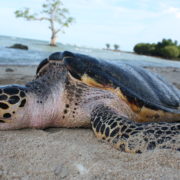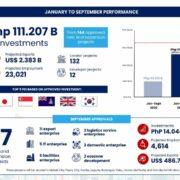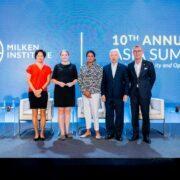
The ASEAN Centre for Biodiversity (ACB) joined the international community in observing the Endangered Species Day on May 15 and urges reflections on the actions to be taken to reverse biodiversity decline across the region and the rest of the world.
The ASEAN region is rich in biodiversity which include wildlife, and enjoys high endemism of flora and fauna. The region has the highest mean proportion of country-endemic bird (9 per cent) and mammal species (11 per cent), and the second highest proportion of country-endemic vascular plant species (25 per cent) compared to the other tropical regions of the world (ASEAN Biodiversity Outlook, 2017). Unfortunately, the region is also known as a biodiversity hotspot. Data from the International Union for Conservation of Nature (IUCN) Red List of Threatened Species in 2019 show that 3,875 species or 13 per cent of the species threatened with extinction globally are found in the ASEAN region.
Wildlife trade and consumption is not only a national concern, but a regional and global concern as well. Several communities rely on wildlife for a number of reasons. Some are rooted in socio-cultural practices. Others look for alternative sources of nutrition and medicine, symbols of luxury and status, and or keep them as pets. According to the Convention on International Trade in Endangered Species of Wild Fauna and Flora (CITES) database, reptiles are the most commonly-confiscated species, followed by birds, mammals, fish and amphibians (D’Cruze and Macdonald, 2016).
The disturbance of natural habitats have far-reaching consequences to ecological balance, including the spillover of zoonotic diseases from non-wildlife hosts, triggering more outbreaks of infectious diseases. The COVID-19 pandemic has even made this connection more obvious. The loss of wildlife species could also mean the narrowing of sources for possible cure and treatment of these diseases, which is among the ecosystems services that they provide.
To conserve endangered species on the brink of extinction, the ACB has been facilitating a wide range of activities spearheaded by ASEAN Member States. Rigorous monitoring, evaluation and assessments of the status of wildlife species, especially the endangered ones, are conducted regularly. The data and information obtained supports the development of the national Red List of endangered species in Singapore, Thailand, and Viet Nam. Community-led monitoring and law enforcement are initiated through education and capacity-building activities. Forest managers and rangers in Lao PDR and Malaysia have been equipped with cameras and information technology to help monitor poaching and other illegal activities, and enforce wildlife protection laws. In the Philippines, for instance, community participation has been instrumental in the recent seizures of illegally traded wildlife.
International and regional cooperation is key to information sharing and apprehension of illegal wildlife traders to end the poaching and trafficking of protected species. Apart from being Parties to the CITES, the 10 ASEAN Member States issued the Chiang Mai Statement of ASEAN Ministers on Illegal Wildlife Trade in March 2019. The bigger challenge rests on instinctively adopting sustainable practices to protect our endangered species, reverse the destruction and restore their natural habitats.
As humanity grapples with climate change impacts and the current pandemic, the only way we can ensure our own existence is by going beyond business-as-usual in the way we treat the other creatures with which we share this planet. The time for transformative change is now.
—
Stay updated with news and information from the ASEAN Centre for Biodiversity by visiting their website at https://aseanbiodiversity.org.







